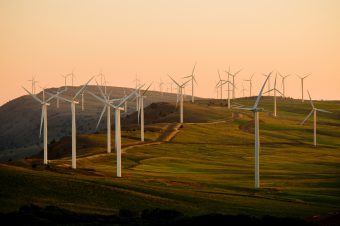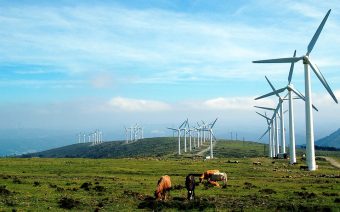
Brush up on your knowledge of wind!
10. Human civilizations have harnessed wind power for thousands of years. Early forms of windmills used wind to crush grain or pump water. Now, modern wind turbines use the wind to create electricity. Learn how a wind turbine works.
9. Today’s wind turbines are much more complicated machines than the traditional prairie windmill. A wind turbine has as many as 8,000 different components.
8. Wind turbines are big. Wind turbine blades average over 190 feet long, and turbine towers average 295 feet tall—about the height of the Statue of Liberty.
7. Higher wind speeds mean more electricity, and wind turbines are getting taller to reach higher heights above ground level where it’s even windier. See the Energy Department’s wind resource maps to find average wind speeds in your state or hometown and learn more about opportunities for taller wind turbines in a report from the Energy Department’s National Renewable Energy Laboratory.
More:
6. Most of the components of wind turbines installed in the United States are manufactured here. There are more than 500 wind-related manufacturing facilities located across 43 states, and the U.S. wind industry currently employs more than 114,000 people.
5. Offshore wind represents a major opportunity to provide power to highly populated coastal cities, and the nation’s first offshore wind farm was installed off the coast of Rhode Island in 2016. See what the Energy Department is doing to develop offshore wind in the United States.

4. With North Carolina’s first utility-scale wind farm coming online in early 2017, there is now utility-scale wind power installed in 41 states. There is distributed wind installed in all 50 states plus Puerto Rico, Guam, and the U.S. Virgin Islands.
3. The United States’ wind power capacity was 105,591 megawatts at the end of 2019, making it the largest renewable energy source in the United States. That’s enough electricity to offset the consumption of 29.5 million average American homes.
2. Wind energy is affordable. Wind prices for power contracts signed in the last few years and levelized wind prices (the price the utility pays to buy power from a wind farm) are 2–4 cents per kilowatt-hour.
1. Wind energy provides more than 10 percentage of total electricity generation in 14 states, and more than 30 percentage in Kansas, Iowa, and Oklahoma.
Source: Clean Technica



